Is there anything more adorable than a fluffy yellow chicken?
No matter what your current flock looks like, there’s always room for these iconic chicken breeds ranging from deep goldens to bright, sunny yellows in color.
Even if you don’t have any birds of your own yet, check out this list of 10 elegant yellow chicken breeds you’re bound to fall in love with!
Table of Contents
ToggleBuff Orpington
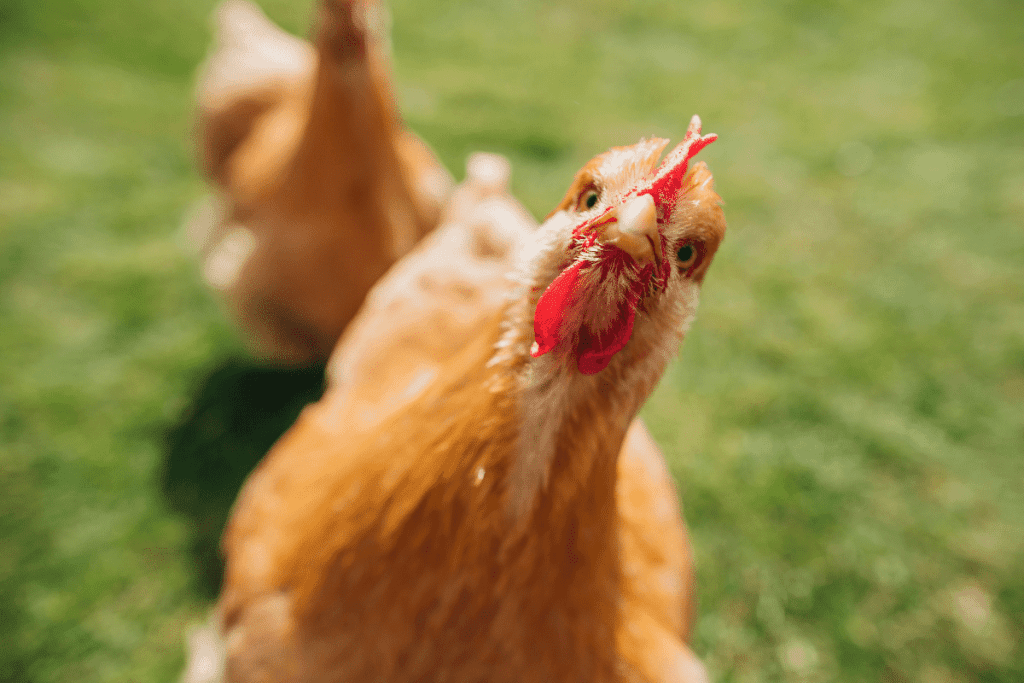
This list wouldn’t be complete without the classic buff Orpington, a British breed dating back to the late 1800s!
Though these handsome, docile birds are available in a wide range of colors (and sizes if you count the bantam version!), the buff variety is one of the most popular and common chicken breeds globally.
Named for the region where it was developed, Orpington, Kent, the breed was originally dual-purpose, as the birds tend to be pretty large in size and excellent egg layers.
Orpington hens produce plenty of tasty meat for their body size, and they’re capable of laying over 200 delicious eggs with rich brown eggshells!
Over time, however, it became more of an exhibition breed and a popular choice of pet amongst hobby farmers.
Today, the Buff Orpington is often regarded as the posterchicken of the breed, thanks to its round, fluffy body, upright, single comb, and attractive golden feathers.
It’s also known for its incredibly calm, curious, and friendly nature, making it an excellent pet and a very productive, useful bird to have around.
In general, Orpington chickens are medium-to-large-sized birds, weighing around 6 to 10 pounds, with roosters heavier than hens.
The bantam variety is much smaller at around 3 to 4 pounds.
They are exceptionally hardy and adaptable, making them suitable for various climates.
This trait, among others, has made them one of the most common breeds of chicken in the world.
Orpington’s also features on our list of grey chicken breeds if you want an ashy, earthy color.
Related: What to feed Orpington chickens?
Buff Brahma

The Brahma is another wildly popular breed with a long history dating back to the early 1800s!
Brahma chickens are also available in many plumage colors and patterns, but the buff variety is one of the most well-known and widely available.
Though their exact origin isn’t well-documented, Brahma chickens were originally imported to the US and Europe from the Chinese port of Shanghai in the 1840s.
They quickly took off in popularity, initially as a meat breed.
Brahma hens are also consistent layers of huge brown eggs.
Brahmas were commonly referred to simply as “Shanghai chickens” until 1852, when a group of professional poultry judges changed the name to “Brahmapootra,” after the Brahmaputra River in Asia.
Over time, the name became shortened to simply “Brahma,” which remains the breed’s common name.
Buff chickens of the Brahma breed typically have a golden yellow base body color with black accent feathers around the hackles and tail. Roosters are particularly vibrant thanks to their more glossy, almost iridescent yellow, orange, and greenish-black neck hackle feathers and tail feathers.
Brahmas are very large, hardy, heavy-bodied birds, usually weighing around 10 to 12 pounds according to breed standards.
Its bantam variety is much smaller at only around 2 to 4 pounds.
As usual, roosters tend to be slightly heavier and taller than hens, shorter and rounder-bodied by comparison.
For more small chickens, check out these options on our list.
Buff Cochin

The Cochin is another large, heavy breed known primarily for its substantial size, round body shape, and densely feathered feet and legs.
Its plumage is a bright and sunny yellow with a fairly small, light pink single-shaped comb from head to toe.
This particular breed also has a long but somewhat confusing history.
It originated in China and was imported to parts of Europe and the Americas in the 1840s and 1850s, around the same time as the Brahma mentioned above breed.
Also similar to the Brahma, Cochins were initially referred to as “Shanghai birds” after the port they were first exported from.
Later, the name shifted to “Cochin-Chinas,” eventually simply “Cochin.”
Historically, these unique chickens have been bred as hardy, reliable egg-layers, pets, and show birds rather than for their subpar meat.
The Cochin is available in a whopping 24 color variants, though the buff variety is certainly one of the most prized and attractive.
They tend to be large, heavy-bodied yet active birds, weighing in at around 8 to 10 pounds, with roosters heavier on average than hens.
The bantam variety is significantly smaller at only around 2 to 4 pounds.
Golden Comet
The Golden Comet is a newer hybrid breed developed primarily by crossbreeding Rhode Island Red chickens with white Leghorns.
Its plumage color ranges from a dark, golden yellow to a reddish, deep cinnamon shade, often with white accent feathers throughout the body and around the tail.
It is similar in size and appearance to the buff Orpington breed, albeit slightly darker in color.
This modern breed is mainly kept for its docile temperament and delicious, plentiful eggs.
Golden Comet hens are exceptional layers of large, reddish-brown eggs.
They can lay well over 300 of these eggs per year, and they lay consistently even in the cold winter months.
They begin laying much earlier than many other popular laying breeds–as early as 4 months!
In addition to their tasty eggs, these friendly birds make excellent family pets and companions.
They are hardy in cold weather climates and active yet calm and gentle birds.
What’s more, they get along well with other animals and bond with their owners.
The average Golden Comet is a medium-sized bird, typically weighing around 5 to 7 pounds.
Most birds tolerate cold and hot weather very well, making them attractive, entertaining, and useful to just about any flock.
Further Reading: What’s the difference between the ISA Brown and Golden Comet?
Buff Sussex
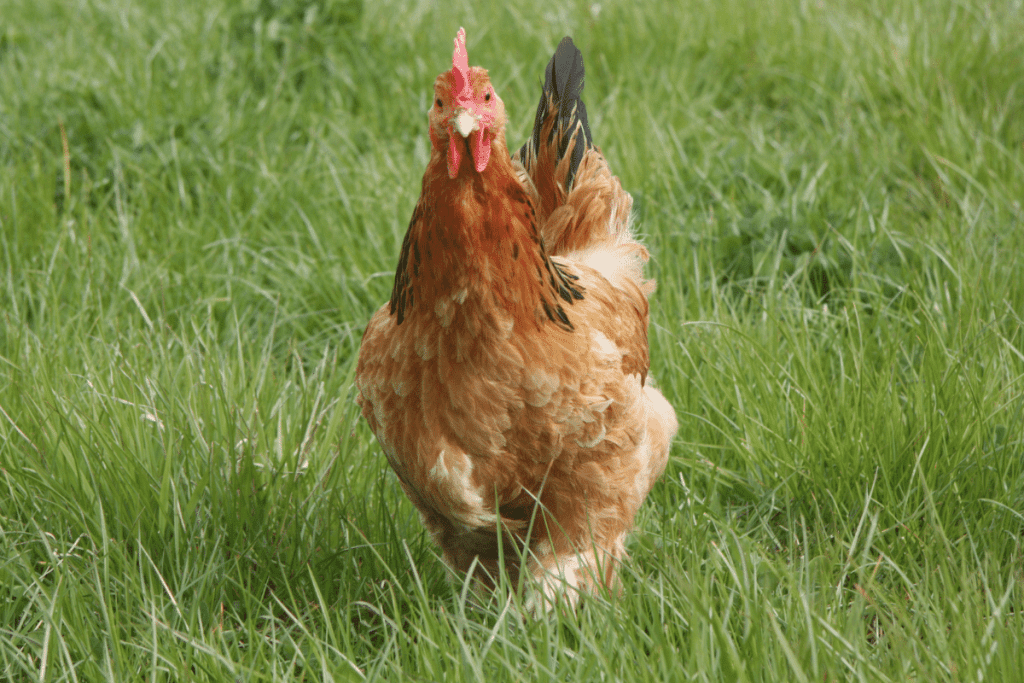
The typical buff Sussex chicken is similar in appearance to the aforementioned buff Brahma earlier on our list.
Its base body color is a pale, golden yellow, with black accent feathers or lacing around the hackles and tail and a bright red, single-shaped comb.
Roosters have much glossier, darker plumage than hens.
This beautiful breed is a historically dual-purpose one named after Sussex County in southeastern England, where it was initially developed in the 1800s.
It is one of the UK’s oldest and most well-known breeds.
Like most breeds on this list, it’s available in a wide range of color varieties, but we’ll primarily focus on the buff variety here.
As a larger breed, the buff Sussex is stout, hardy, and useful for its large eggs and as a source of meat.
Thanks to its docile and friendly yet active and energetic temperament, it has become a reasonably popular exhibition breed and an increasingly common pet amongst hobby farmers.
Sussex chickens are also strong foragers, making them a delight to observe.
On average, Sussex birds are quite heavy, weighing around 6 to 9 pounds, with birds of its bantam variety being much lighter at only about 2 to 3.5 pounds (yet still on the heavier end for a bantam!).
Related reading:
Gold Sex Link
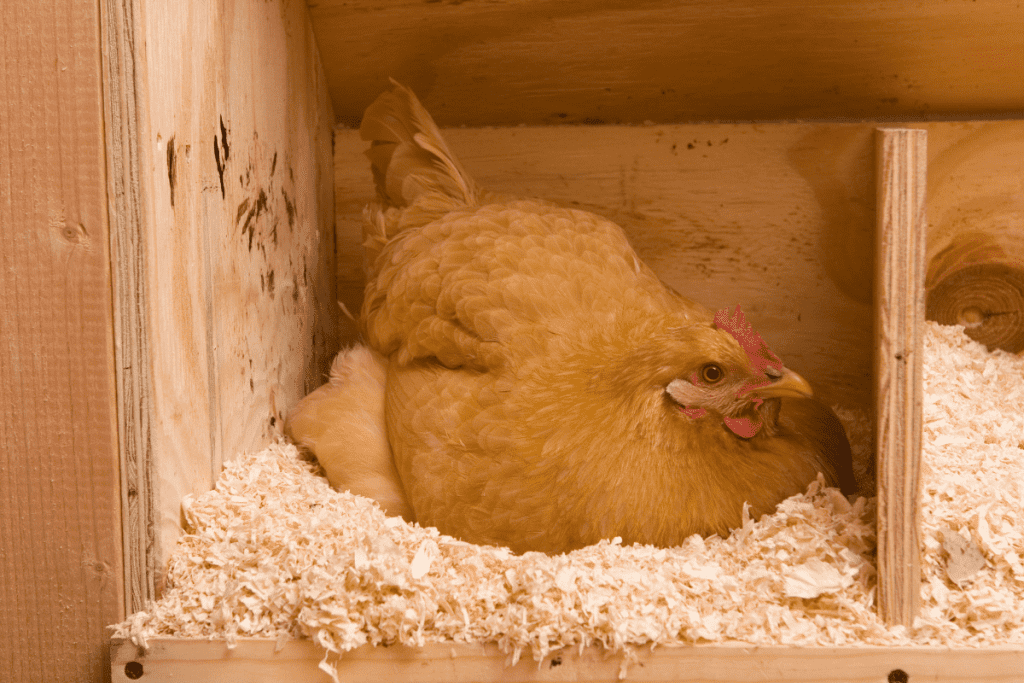
This unique modern breed crosses the wildly popular Rhode Island White and Rhode Island Red breeds.
Typical of sex-linked breeds, it is possible to determine the sex of Gold Sex Link chicks immediately after they’ve hatched.
The Gold Sex Link is one of the more popular dual-purpose chicken breeds known for its large, delicious brown eggs and surprisingly robust meat, especially for a more tall and slender bird.
The typical Gold Sex Link hen is a prolific, consistent layer capable of producing more than 300 eggs per year.
Because they are very hardy in both hot and cold climates, they are fair layers even on the chilliest of winter days.
Another excellent quality of this breed’s agreeable, docile temperament and hardy nature is another great quality.
Most Gold Sex Links get along well with other breeds and typical farm birds like ducks, Guinea hens, and turkeys.
This makes them an especially great choice for beginner hobby farmers looking to build their first flock.
As we touched on above, Gold Sex Links are medium-to-large-sized birds, usually weighing around 5 to 7 pounds.
Their plumage ranges from a deep golden buff color to a reddish-orange with white accent feathers around the hackles and rear.
Buff Laced Polish
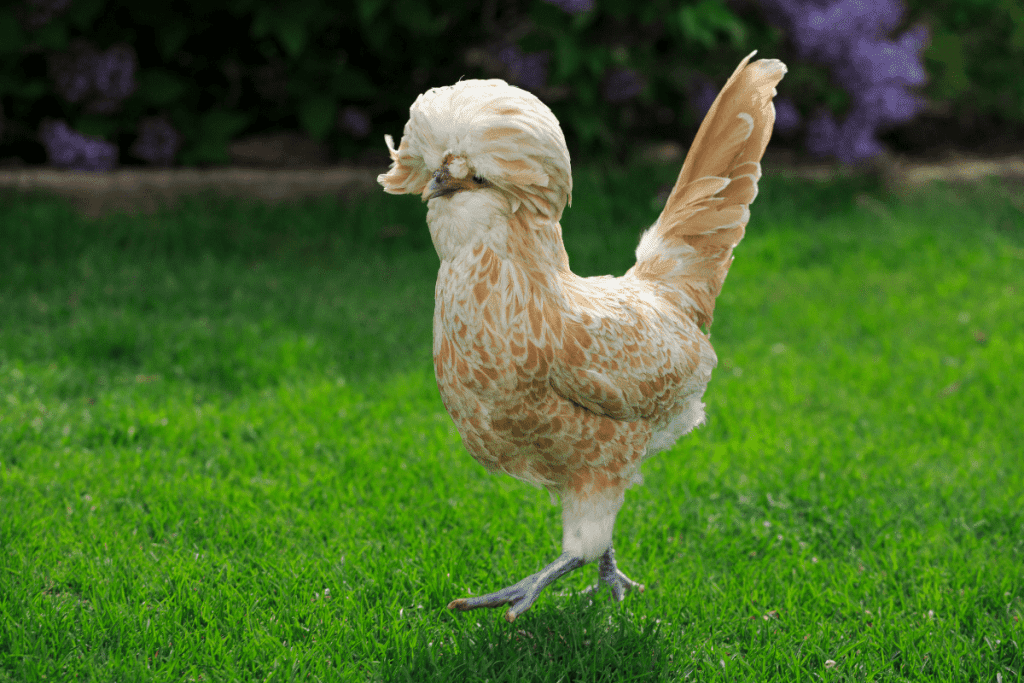
The Polish, also sometimes known as the Polish Top Hat for its round, fluffy, hat-like crest atop its head, is an exceptionally unique breed with an interesting–if somewhat confusing–background.
Though its history is unfortunately not well-documented, most historians believe this breed was originally brought to Eastern European countries (including Poland) by East Asian Mongols way back in the 1500s!
The Polish breed became popular throughout Eastern and Western Europe and eventually made its way to the Americas in the 1800s.
Due to its fairly small size and unusual plumage, it is mainly kept as an exhibition breed and pet today, though it also is a decent layer.
Aside from their large, round, puffy crests of feathers, Polish chickens are also notable for their somewhat rare and unique comb shape.
The birds’ protruding V-shaped combs look almost like tiny, red horns!
They’re also available in a relatively wide range of color variants, notably the yellowish-orange and white buff laced variety.
Thanks to careful selective breeding, there are now also frizzle, bearded, and non-bearded varieties in addition to the breed’s many distinct colors.
The average Polish chicken is a tall, slender bird, weighing around 4 to 6 pounds.
Bantam Polish chickens are around half this size at roughly 2 to 3 pounds.
Both varieties are an excellent choice amongst hobby farmers looking for a unique yet hardy domestic chicken to add to their flocks.
Buff Silkie
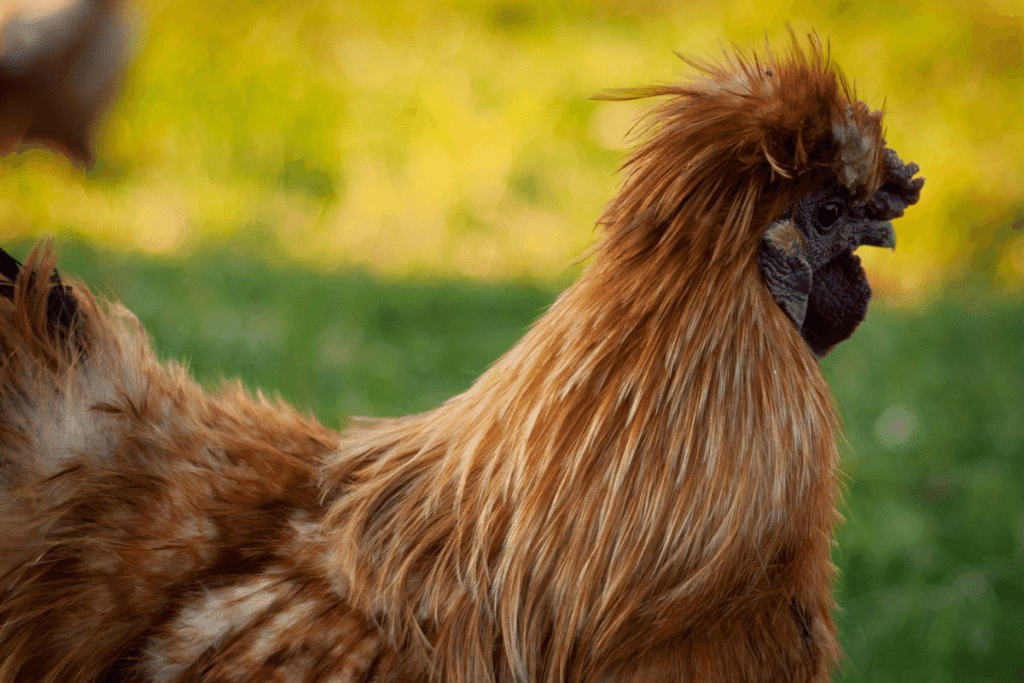
The Silkie chicken is a visually stunning feather-legged bird that often goes viral for its bizarrely adorable, insanely fluffy plumage and bluish-black skin.
These ultra-soft, hair-like feathers are thanks to their feathers’ lack of connective barbicels or tiny filaments, which give bird feathers their typical, more rigid, and defined structure.
Interestingly, Silkies tend to be poor fliers due to this strange trait.
While they are available in several handsome colors, buff Silkies are especially attractive and vibrant with their golden-brown, yellow, and white coloration.
The Silkie is also a breed with densely feathered legs and feet, a somewhat rare trait amongst chicken breeds.
The Silkie’s history is long and not very well-documented, but it has likely existed in some form since the 1200s, making it an ancient breed!
Famed explorer Marco Polo even documented “furry chickens” in his travels in Asia in the late 1200s.
Despite this, this excellent breed didn’t make it to the Americas until the late 19th century.
Today, Silkies are common pets for backyard flocks and popular ornamental birds for their beautiful plumage, small size, and calm, affectionate nature.
In some parts of China, it is sometimes used for meat production, as its dark grey, flavorful meat is considered a delicacy.
It’s also surprisingly useful for egg production despite its delicate body and small size of only 4 to 5 pounds.
Wheaten Japanese Bantam
Also known as the Chabo, this small, unusual Japanese breed is one of many true bantam breeds, meaning it has no standard-sized equivalent.
While it’s available in tons and tons of different colors (42, to be exact!), the golden-yellow wheaten variety is among the most colorful and vibrant, with its bright body plumage beautifully accented by very long dark brown and black tail feathers.
The Japanese bantam’s history and origins are largely unknown, though historians believe it originated sometime in the 17th century.
However, it didn’t make it to Europe and the Americas until the middle of the 19th century.
Today, these strange-looking birds are mainly kept as pets and ornamental purposes.
In addition to their small, slender size, they have unusually short legs due to a genetic mutation known as the creeper gene.
The typical Japanese bantam’s tail feathers are very tall and upright, often standing taller than the bird’s head!
They’re also some of the smallest chickens globally, rarely weighing more than a mere 2 pounds.
They do incredibly well in hot climates due to their small size, excellent stamina, and lightweight plumage.
Yellow-Hair
We close out this list with a lesser-known Chinese breed of chicken, simply known as the yellow-hair or yellow-feather chicken.
It is named for its elegant yellow plumage and long, glossy, hair-like feathers around its hackles and wings.
Like many of the less popular breeds on this list, this breed’s history is sadly not well-documented, but it has been raised primarily for its flavorful, low-fat meat in China for many years.
It takes around three times as long to raise a yellow-hair chicken to full size than typical broiler chickens (120 days compared to around 40 for most broilers).
Still, its meat is often considered a delicacy and worth the effort and time to raise properly.
Still, broiler chickens are slowly replacing these Chinese chickens in the meat industry due to how inexpensive and easy they are to raise by comparison.
Though this breed is rarer and not particularly well-understood, the yellow-hair is slowly becoming more popular as a pet and show breed.
It is a relatively tall and slender average-sized bird.
How useful was this post?
Click on a star to rate it!
We are sorry that this post was not useful for you!
Let us improve this post!
Tell us how we can improve this post?
